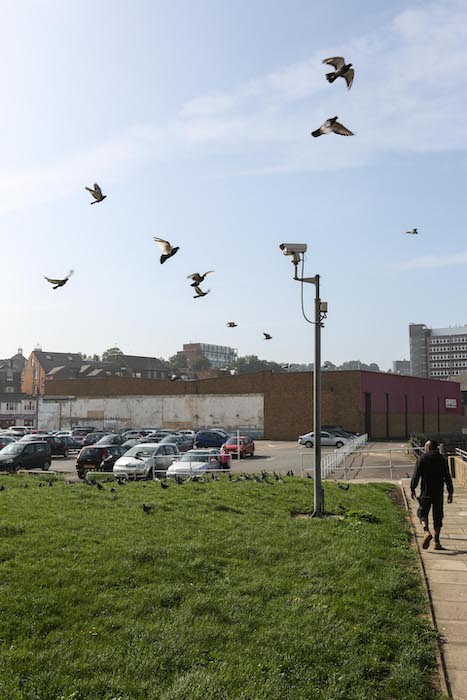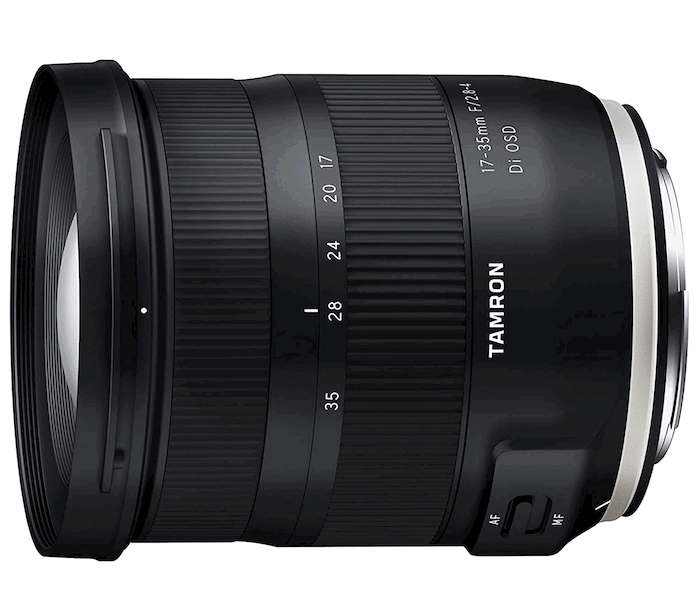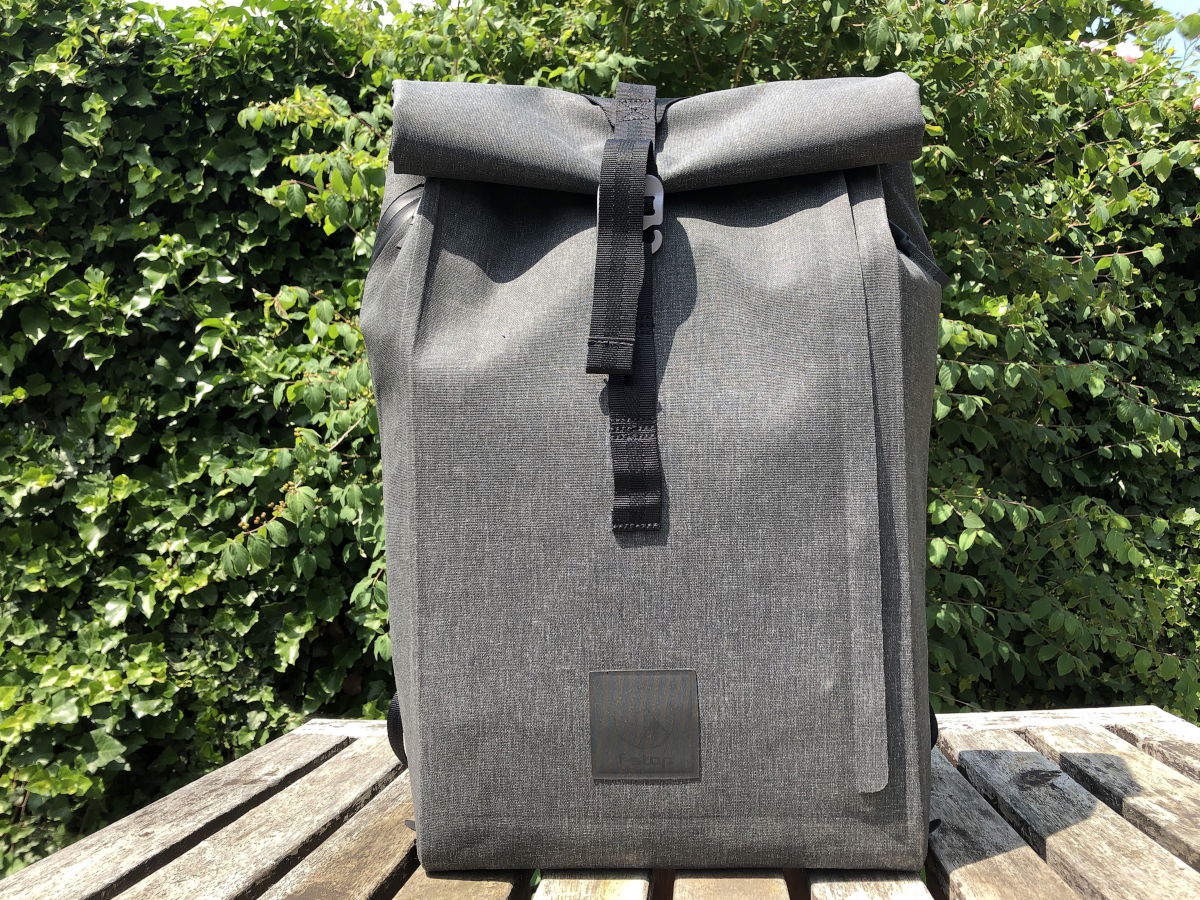The Canon EF 16-35mm f/2.8 II USM Lens is a professional-grade ultra-wide angle zoom lens that’s ideal for both photography and video shooting. It features a fast maximum aperture of f/2.8, along with optical image stabilization (IS) to help minimize the effects of camera shake, plus a ring-type USM motor for quick and quiet autofocus performance.


| Brand |
Brand
Canon
|
| Lens Mount |
Lens Mount
Canon EF
|
| Maximum Aperture |
Maximum Aperture
f/ 2.8
|
| Focal Length Range |
Focal Length Range
16-35 mm
|
| Image Stabilization |
Image Stabilization
|
Of course, it’s a good bit of glass because it’s part of Canon’s L-series. It’s a range of Canon lenses with excellent durability and weather-sealing capabilities.
It aims to be an ultra-wide-angle with speed because of its wide f/2.8 aperture. Photographing sports or other action shots in this wide format has never been more accessible with the release of this series of lenses in 2001.
Since 2016, Canon has released newer updates of this lens have been. This review will explore why I do not feel like this is a nail in the coffin for the Canon 16-35mm f/2.8 II. This lens is still a viable, go-to option
Note: Canon provides you with a soft case and a lens hood to fit the 82mm lens diameter in the box.

You need a full frame body Canon DSLR to take full advantage of this lens. You can use it on crop sensor cameras in Canons range, but I wouldn’t recommend it. The loss of coverage is too significant for the price you are paying.
I highly recommend this as an all-purpose wide-angle lens for people new to photography. It’s a great option if you’re looking to invest in an excellent lens.
When photographing with my Canon 5D Mark III, I find Canon EF 16-35mm II consistently takes technically amazing images. This fantastic camera-and-lens combo has provided some of the most fun photographic experiences I have ever had.
As mentioned, this lens is a favorite for photojournalists. That is due to its excellence in capturing fast-paced, action-packed situations.
It lends itself nicely to similar genres such as street, event, and documentary photography. It’s a lens that rewards photographers who get one step closer to their subjects.
Of course, it is a wide-angle lens, so its uses in landscape photography shouldn’t be surprising. Its properties lend it perfectly for time-lapses, star trails, and other landscape-focused imagery.
Beyond this, we can use it for architecture—for both exterior and interior images. I have even used it for product photography for advertisements.

Let’s take a deeper look into the Canon 16-35mm. Take note of what properties are most important for you. If needed, you can learn about Canon’s lens abbreviations here.
This lens belongs to the Canon EF range. That means Canon created it explicitly for its full frame cameras.
Yet it still fits Canon cameras with cropped sensors, such as the 7D and Rebel range. But crop sensors are smaller, so their covering power narrows the focal length of this lens into the equivalent of a 26-57mm lens.
Canon has done a great job of providing lens mount adapters to fit this lens to the smaller EOS M range and the newer EOS R range. Plus, a rubber ring around the mount provides an even tighter weather-proof fit when on a lens cap or directly installed on your full frame body.
Because we want to keep your kit as safe as possible, I suggest adding a UV filter to complete the lens’s weather sealing.

Because it is an f/2.8 lens, it is fast enough to photograph at night or in low-light situations.
Unfortunately, there is no image stabilization for this lens. If you need image stabilization, take a look at the newer Canon 16-35mm f/4 IS. The IS allows you to shoot at slower speeds without using a tripod.
The widest focal length (16mm) pushes the capability of this lens. The images start to converge toward their widest setting due to barrel distortion. But you will find this in all ultra-wide-angle lenses.
Take some trial shots to see what you can and cannot get away with photographing. The sharp image quality with a full frame DSLR is still good, even 15 years after its first release.
Due to the lens’s slight distortion, there is a minor loss of sharpness on the outer edges of images compared to the center. Again, this is also common in ultra-wide-angle lenses.
I have heard that the newer Canon 16-35mm f/2.8 L III provides sharpness in corners. But it is a bigger, heavier, and more expensive lens. And the problem isn’t too much of an issue anyway.
There is some talk about a slight vignetting due to fall-off, which is common in ultra-wide-angle lenses. Still, it has never been an issue to me due to photographing on a Canon 5D III. The full frame body corrects this issue.
If you have a camera made before 2012, the 16-35mm f/2.8 II is still worth looking at. I don’t think it is too detrimental.
You can adjust vignetting with various computer software. And it is only noticeable when the lens is at its widest (16mm focal length at f/2.8).

The silence and speed of the USM (ultra-sonic motor) autofocus were revolutionary for a time. It allows a sensitive touch for sensitive situations, mainly because the focus is entirely internal.
This means nothing external moves when you adjust the focus or the focal range. I have never had an issue with the consistency or accuracy of the lens’s focus. And I have never heard of anyone having problems with it.
An excellent, helpful touch is the lens’s manual override. It makes it possible to adjust focus without switching to MF (manual focus) on the lens. Although, there is still a switch on the lens for the manual focus option.
The lens is also advertised as excelling in DSLR filming. The smooth autofocusing adds a cinematic feel to video recording and helps you have a precise touch on those more considered shots.
Focusing has a minimum distance of 28cm. It’s excellent for this lens but not very relevant for wide-angle images.

Weight has never been an issue for me. It does seem like it could pull you down a bit, but at 640grams, it won’t leave your shoulder slumped.
The lens itself is very ergonomic. Whether planned or not, it fits nicely in your palm. With smooth, convenient focusing and zoom rings, using the lens becomes second nature very fast.
I am also constantly surprised by this lens’s strength and robust nature. It has been all around the world with me and has taken a few knocks in harsh environments.
I have had no noticeable effect or wear from an accumulation of hits. The textured plastic form of the lens comes across as more metallic, adding to the perceived strength of the lens.
One point to note is the lens’s front end’s increased diameter in the most recent lens in its series. It has now changed to 77mm from 82mm. The change in diameter hints at Canon eliminating the need for ultra-thin filters to avoid vignetting when shooting fully wide.
As this is quite wide, you will also receive a comically large lens hood for this lens. As always, lens hoods are essential for shooting in certain lighting conditions. But becasue it is so large, you will get a shadow on the bottom of your frame when shooting with a built-in flash.

An advantage of newer versions being out means the Canon 16-35mm f/2.8 II should be a considerate amount cheaper. But there might be some more recent features you might want to consider.
Tamron also has a lens with a similar focal range—the 17-35mm f/2.8-4. This is the smallest and lightest ultra-wide-angle you will be able to find on the market.
Canon’s 16-35mm comes in at 640g, whereas Tamron’s 17-35mm is 460g. So, if you’re looking for a lens that saves you some extra weight, this may be the one.
The Tamron is relatively new, being in shops since 2018. So, it is likely faster and more accurate than Canon’s 16-55mm f/2.8 II, released in 2007.
Tamron’s Optimized Silent Drive (OSD) allows excellent autofocus speeds and reduced noise. But this lens doesn’t have vibration compensation control.
Keep in mind that Tamron lenses are typically half the price compared to Canon lenses. So, they’re an affordable alternative that still provides sharp images.

Suppose you are keen on getting the newest equipment with money, weight, and size not being an issue. If that’s the case, it’s worth looking at the more recent Canon 16-35mm f/2.8 III.
The Canon 16-35mm f/2.8 III is more refined when dealing with wide-angle shots at a wide aperture. This isn’t too much of an issue, as I can’t imagine many people shooting landscapes at an aperture of f/2.8. But, if you’re looking for the sharpest lens in all facets, this third rendition is miles better in these out-of-reach areas.
An interesting point to consider—the older, second rendition is tougher than this newer version. It is equally surprising when you handle the lenses. You can feel that the older version is smaller and lighter as well!
Of course, this doesn’t mean the new one is cheap plastic. But it may be worth considering where you will use this lens before buying it. The f/2.8 II may hold up in harsher environments.

Canon’s 16-35mm f/4 IS lens is around the same size. Canon released it in 2014, seven years after the 16-35mm f/2.8 II.
This lens also fills in the weaker points of the f/2.8 II regarding sharpness. It also added image stabilization to its features.
This could be the ideal lens if you’re on the hunt for the sharpest photos. Yet, the loss of an extra stop could hinder shooting faster-moving subjects.
When examining image sharpness in warped areas, the IS and III are close in performance. But I would say the IS does look a little sharper in the corners. However, this could be because of the f/4 aperture compared to the f/2.8.
The other big point about this lens—it handles low-light situations amazingly well. This is because of the image stabilization. So for photographers who take photos into twilight, you can leave your tripod at home!

From my personal experience, you can’t go wrong with this Canon 16-35mm f/2.8 II. It’s a solid choice if you are looking for an all-around wide-angle lens that can go “ultrawide.” It has superb image quality expected from a full frame lens.
I have been photographing with this lens for over six years now for work and personal use. I can tell you that I’ve taken at least 60% of my images with this lens.
I’m surprised by how many environments and photography styles it performs well in—especially fast-paced, photojournalistic work. But capturing the surrounding environment with a wide-angle—not just the subject—adds a lot of context for viewers.
For amateur photographers, this is an easy lens to master. For professionals, you will have a great time photographing with this piece of kit.
This lens is a crucial part of my equipment, and perhaps I won’t have to replace it for six more years. I hope this Canon 16-35mm f/2.8 II USM review helps you decide if it’s the right one for you!
| Measurement |
Measurement
Score
|
| Build and Handling |
Build and Handling
|
| Focusing |
Focusing
|
| Image Quality |
Image Quality
|
| Miscellaneous |
Miscellaneous
|
| Value for Money |
Value for Money
|
| Total Score |
Total Score
|

